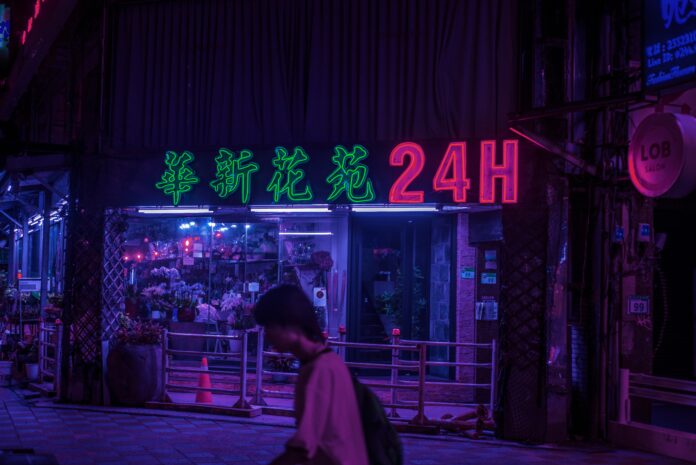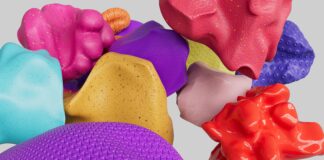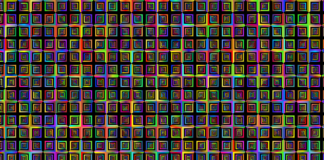Waabi, a beacon of innovation in the realm of autonomous driving, emerges as a transformative force poised to reshape the landscape of transportation. With a name that echoes a harmonious balance between technology and human ingenuity, Waabi stands at the forefront of self-driving technology, pioneering a new era where vehicles navigate with unprecedented precision, safety, and adaptability. Beyond the confines of traditional automotive paradigms, Waabi becomes a catalyst for change, ushering in a future where autonomous vehicles seamlessly integrate into our lives, revolutionizing mobility and redefining our relationship with the road.
In the heart of Waabi’s mission lies a commitment to pushing the boundaries of what is possible. Imagine a laboratory where engineers and visionaries collaborate, a crucible of creativity where algorithms are refined, sensors are fine-tuned, and machine learning models evolve. Waabi becomes a hub of innovation, where minds converge to tackle the intricate challenges of autonomous driving, and where every line of code contributes to a grand symphony of technological advancement. It’s a place where aspirations take the form of algorithms and where the future of transportation is meticulously crafted line by line.
Picture a fleet of Waabi vehicles gliding through city streets, their movements orchestrated by a symphony of sensors, cameras, and neural networks. As pedestrians cross intersections and cyclists weave through traffic, Waabi’s vehicles navigate with a finesse that mirrors the grace of a skilled conductor. The streets become a canvas of collaboration between human intuition and machine precision, as Waabi’s technology seamlessly integrates into the urban fabric, ensuring not only the safety of passengers but also the harmony of a shared ecosystem.
Waabi’s journey takes us through the evolution of transportation, where the notion of a car transforms into an intelligent entity that thinks, learns, and adapts. Imagine a scenario where a passenger steps into a Waabi vehicle, and with a voice command, embarks on a journey that transcends mere transportation. The vehicle becomes a companion, engaging in conversations, offering recommendations, and providing an experience that mirrors the comforts of home. With each interaction, the bond between human and machine strengthens, leading to a new era of personalized and intuitive travel.
The impact of Waabi is felt not only in the world of technology but also in the realm of trust and safety. Consider a scenario where a family sets out on a road trip, placing their confidence in the hands of a Waabi autonomous vehicle. As the miles unfold, the vehicle’s advanced sensors and real-time data processing ensure a level of safety that surpasses human capability. Waabi becomes a guardian, a watchful presence that anticipates hazards, reacts to unexpected situations, and ensures the well-being of its passengers, creating a future where road accidents are relics of the past.
In the landscape of urban planning and infrastructure, Waabi’s influence becomes a catalyst for change. Imagine a cityscape reimagined to accommodate autonomous vehicles seamlessly. Traffic congestion becomes a distant memory as Waabi’s vehicles communicate with one another, harmonizing their movements to optimize traffic flow. Parking lots are transformed into green spaces, and intersections evolve into fluid junctions where vehicles pass without pause. Waabi becomes an architect of urban transformation, reshaping the physical environment to align with the demands of a future defined by autonomous mobility.
Waabi’s legacy extends to the realm of accessibility and inclusivity, where it becomes a champion for individuals with varying mobility needs. Imagine a world where senior citizens, differently-abled individuals, and those with limited mobility enjoy newfound freedom as they step into Waabi vehicles. The barriers of physical limitations dissolve, replaced by a sense of empowerment and the ability to navigate the world with newfound independence. Waabi becomes a symbol of equality, breaking down barriers and ensuring that autonomous mobility is a right accessible to all.
In the world of sustainability and environmental responsibility, Waabi’s impact is profound. Consider a fleet of electric and autonomous Waabi vehicles silently traversing city streets, their zero-emission operations contributing to cleaner air and reduced carbon footprint. Waabi becomes a steward of the planet, embracing a commitment to eco-conscious practices that align with a greener and more sustainable future. It stands as a reminder that innovation and environmental stewardship can coexist, paving the way for a future where mobility and sustainability are harmonized.
Waabi’s journey through the corridors of time takes us to a future where autonomous driving is not just a technology but a way of life. Imagine a world where traffic congestion is minimized, accidents are nearly unheard of, and the act of driving becomes an opportunity for relaxation, productivity, or simply enjoying the scenery. Waabi becomes a companion that adapts to our needs, preferences, and aspirations, allowing us to reclaim time and create meaningful experiences during our journeys.
In conclusion, Waabi’s narrative is one of relentless pursuit, where human intelligence and technological prowess converge to shape the future of transportation. Its influence extends beyond the realm of autonomous vehicles; it becomes a beacon of innovation, safety, sustainability, and inclusivity. The legacy of Waabi is etched into the roadmap of progress, guiding us toward a future where the road ahead is illuminated by the promise of autonomous mobility, and where vehicles become partners in a journey that transcends time, space, and the limits of human imagination.
Cutting-Edge Autonomous Technology:
Waabi pioneers advanced autonomous driving technology that integrates AI, machine learning, and sensor fusion for safe and efficient self-driving capabilities.
Human-Centric Interaction:
Waabi vehicles offer a personalized and intuitive travel experience, engaging passengers through natural language processing and providing recommendations and assistance.
Enhanced Safety:
With real-time data processing and predictive analytics, Waabi ensures a higher level of safety compared to human drivers, minimizing the risk of accidents and collisions.
Eco-Friendly Mobility:
Waabi embraces sustainability by offering electric and emissions-free autonomous vehicles, contributing to cleaner air and reduced carbon footprint in urban environments.
Urban Integration:
Waabi’s vehicles seamlessly navigate city streets, harmonizing with existing infrastructure and communication systems to optimize traffic flow and reduce congestion.
Inclusivity and Accessibility:
Waabi prioritizes inclusivity, catering to individuals with varying mobility needs and ensuring that autonomous mobility is accessible to all segments of the population.
Connected Vehicle Ecosystem:
Waabi vehicles communicate with each other and with urban infrastructure, creating a connected ecosystem that enhances traffic coordination and minimizes disruptions.
Adaptive Learning:
Through continuous machine learning, Waabi vehicles adapt to road conditions, weather, and user preferences, providing a smoother and more personalized travel experience.
Roadmap for the Future:
Waabi is dedicated to pushing the boundaries of autonomous technology, with a commitment to ongoing research and development that ensures its vehicles remain at the forefront of innovation.
Transformative Mobility Experience:
Waabi redefines the concept of transportation, offering a transformative mobility experience where passengers reclaim time, increase productivity, and enjoy a safer and more connected journey on the road.
Waabi’s journey through the realms of technology and innovation is a narrative woven with threads of curiosity, exploration, and the unquenchable thirst for progress. Like an artist with a blank canvas, Waabi dares to imagine a world where machines coexist harmoniously with humans, where the road becomes a canvas for a symphony of movements orchestrated by algorithms and sensors. It is a journey that takes us beyond the tangible features and into the realm of possibilities, where the boundaries between science fiction and reality blur, and where the road ahead is illuminated by the promise of a future transformed.
In the heart of Waabi’s journey lies a quest for knowledge and understanding, a hunger to decipher the complexities of autonomous driving and unveil the mysteries that lie beneath the surface. Engineers pore over lines of code, dissecting algorithms with the precision of a surgeon, and delving into the intricacies of neural networks with the curiosity of a child exploring a hidden treasure trove. It is a journey that celebrates the beauty of discovery, the joy of unraveling the unknown, and the thrill of pushing the limits of human ingenuity.
As Waabi’s vehicles traverse through city streets, they become more than just machines on a mission; they become participants in a dance of synchronization and coordination. Sensors communicate with impeccable timing, cameras capture fleeting moments with astonishing clarity, and machine learning models adapt and evolve in real-time. It is a dance that mirrors the delicate balance of nature, where each entity plays a role in the grand symphony of urban life, contributing to a harmony that is both awe-inspiring and humbling.
Waabi’s journey is not confined to the present; it reaches back into the annals of history, drawing inspiration from pioneers who dared to dream beyond the limits of their time. It resonates with the audacity of inventors who conceived the first automobiles, the courage of aviators who took to the skies, and the visionaries who harnessed electricity to transform the world. Waabi becomes a torchbearer for progress, carrying the legacy of human achievement as it forges ahead into uncharted territories.
In the world of autonomous driving, trust becomes a cornerstone, a pillar upon which the entire ecosystem rests. Passengers place their trust in Waabi’s technology, relinquishing control and allowing the machine to guide them safely to their destination. It is a profound act of faith, a testament to the resilience of human spirit and the willingness to embrace change. Waabi becomes a custodian of this trust, an entity that upholds its responsibility with unwavering dedication, ensuring that safety, reliability, and transparency are the guiding principles of every journey.
As Waabi’s vehicles navigate through the complexities of urban landscapes, they become witnesses to the tapestry of human existence. They traverse through neighborhoods rich with history, bustling markets teeming with life, and serene parks where individuals find solace amidst the chaos of city life. It is a journey that encapsulates the essence of humanity – the dreams, aspirations, and interactions that define our collective experience. Waabi’s role becomes that of a silent observer, capturing moments that paint a vivid portrait of the human journey through time and space.
The impact of Waabi reverberates through the corridors of education and knowledge, inspiring the next generation of thinkers, creators, and innovators. Students study the intricacies of autonomous technology, engineers draw inspiration from Waabi’s achievements, and entrepreneurs aspire to emulate its success. Waabi becomes a beacon of inspiration, a source of motivation that demonstrates the power of perseverance and the limitless potential of human endeavor.
In the realm of societal progress, Waabi’s influence is felt as it becomes a catalyst for change. Imagine a world where autonomous vehicles reshape the concept of urban planning, where parking spaces transform into parks, and where city streets are reclaimed by pedestrians and cyclists. Waabi becomes a partner in shaping sustainable cities, where the ecosystem thrives in harmony with technology, nature, and the human experience.
In conclusion, Waabi’s journey transcends the realm of technology; it becomes a narrative of human evolution, of dreams realized and aspirations fulfilled. Its impact is not confined to roads and algorithms; it extends to the very fabric of human existence, shaping the way we move, connect, and envision the possibilities that lie ahead. Waabi becomes a story of transformation, a journey that reflects the indomitable spirit of humanity’s pursuit of progress, and a reminder that the road to the future is paved with the dreams of visionaries who dared to imagine the impossible.














